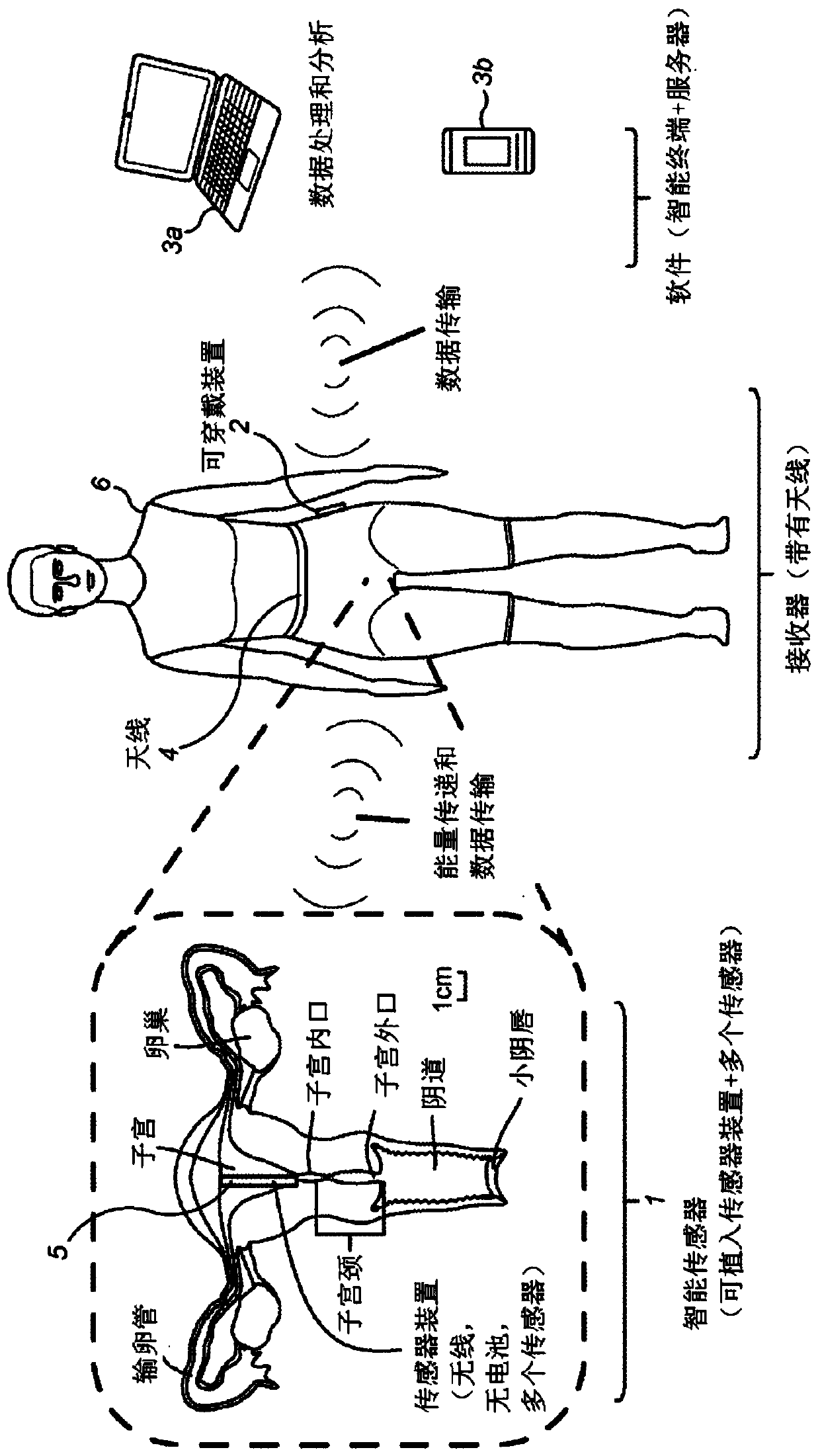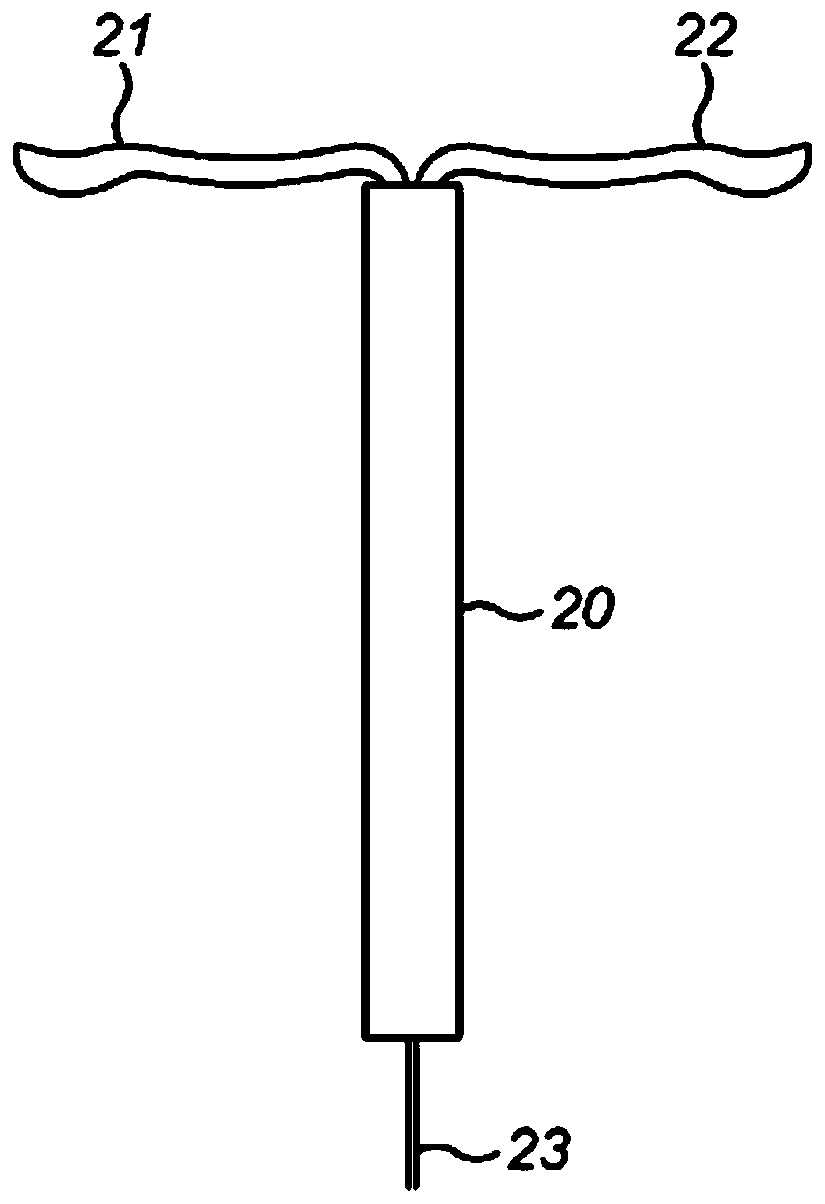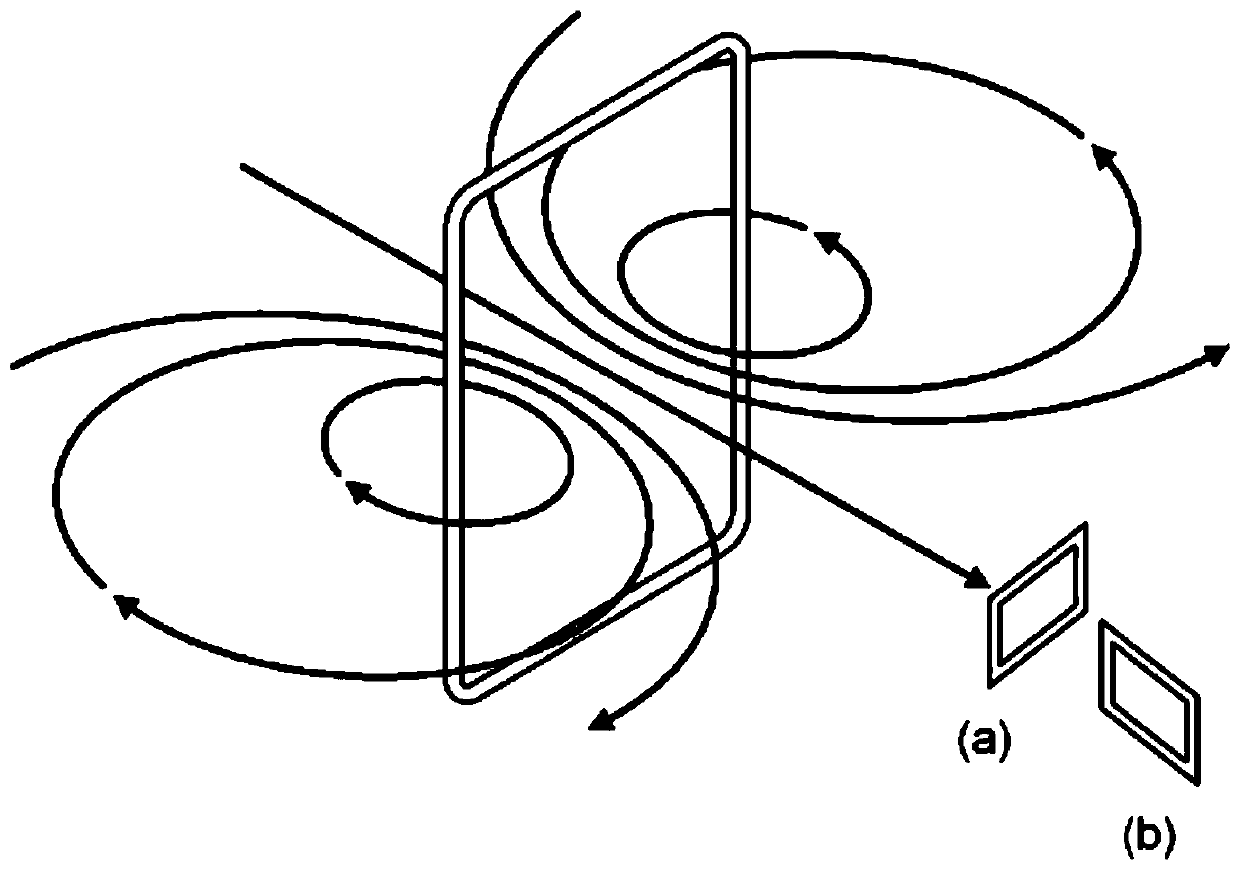Wearable antenna and intra-uterine monitoring system
An antenna and uterus technology, applied in the field of intrauterine monitoring systems, can solve the problems of data loss, inability to transmit energy, user discomfort, etc., and achieve the effects of good wireless performance, reliable and sturdy design, and wide working angle
- Summary
- Abstract
- Description
- Claims
- Application Information
AI Technical Summary
Problems solved by technology
Method used
Image
Examples
Embodiment Construction
[0043] refer to figure 1, showing a three-module structured multi-parameter in vivo sensing platform for intrauterine environment monitoring. The platform consists of a smart sensor 1 (an implantable sensor device shaped and sized to be implanted in a human uterus), an external receiver 2, usually wearable, and mounted on appropriate data processing hardware such as a computer 3a or a portable electronic device 3b. ) on the monitoring software. The smart sensor 1 is a fully implantable (inside the uterus 5 of a female body 6 ) sensor device incorporating multiple embedded biosensors (designed to measure temperature, dissolved oxygen concentration (DOC) and pH). Temperature, DOC and pH are considered as the three most important parameters to measure for this application as they maintain a homeostatic controlled balance of gases and acids and bases that are vital to human life and reproduction. They may determine the receptivity of the environment in the uterus to the implante...
PUM
 Login to View More
Login to View More Abstract
Description
Claims
Application Information
 Login to View More
Login to View More - R&D
- Intellectual Property
- Life Sciences
- Materials
- Tech Scout
- Unparalleled Data Quality
- Higher Quality Content
- 60% Fewer Hallucinations
Browse by: Latest US Patents, China's latest patents, Technical Efficacy Thesaurus, Application Domain, Technology Topic, Popular Technical Reports.
© 2025 PatSnap. All rights reserved.Legal|Privacy policy|Modern Slavery Act Transparency Statement|Sitemap|About US| Contact US: help@patsnap.com



